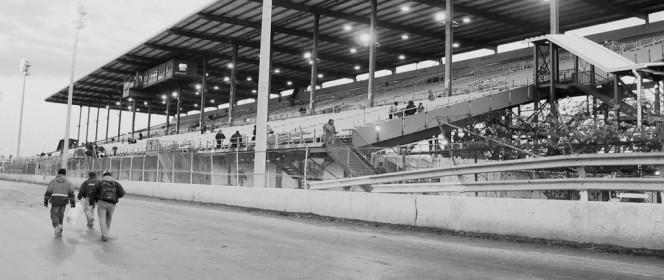The history of the Moody Mile
As we are rapidly closing on Super DIRT Week XLIII, I decided to dust off one of my old columns that I wrote in 2009 and update it a little to keep up with the history of Syracuse. Those who are avid readers of 360Nitro will be recognize parts of it, but I thought it could be interesting to put it back for those who didn’t have the chance to read it.
Lots of race fans from all across the United States and Canada converge on the New York State Fairgrounds each and every year to celebrate what is known as Super DIRT Week on the Moody Mile. Here’s how all it started for this legendary race track.
The one mile oval was built at the end of the 1820s. The purpose behind it was Horse Racing which back in the day was a pretty big deal with purses over 1000$. They eventually decided to expand and create a Fairground around the speedway. The Fairgrounds and all of its buildings were previously built in Auburn, New York, but were move to Syracuse in 1841. In those years, there was also a ½ mile oval that was built inside the Mile which has had many purposes over the years. In fact, the Syracuse’s University started using those grounds for their football team around the 1900s.
The first time race cars hit the Mile was back in 1905. Utica’s Automobile Club sanctioned 2 10-mile races and the winners were Henry Paige and Jules Sincholle.
A couple of years later, in 1909, the AAA championship circuit started racing on the Mile. The worst tragedy to have ever happened in the racing community around the United States was actually during those years and it happened on the Mile. One of the AAA racers, Lee Oldfield stormed through a wooden fence in turn 2 and killed 11 spectators, while injuring around 10. That event occurred in 1911 and still stands today as the worst that has ever happened as far as casualties.
The AAA championship would eventually come back to the Mile a couple years, around the 1920s. In 1924, another tragedy happened as racer Jimmy Murphy, the first US racer to win a European Grand Prix and past winner of the Indianapolis 500, was killed when debris of the wooden fence hit the cockpit in his race car.
Syracuse kept having the AAA championship through the 1930s up until 1941, when World War II put a stop to any sort of racing around the United States. In those years, the Fairground was used as a training facility for the US Army. Racing on the Mile came back 8 years later, in 1949.
In 1955, the AAA association quit racing for good after another tragedy struck in France, this time 81 casualties. That marked the beginning of the USAC era in the racing world. NASCAR also visited the Mile from 1955 to 1957 with their Grand National Series, known today as the Sprint Cup Series. The winners during those years were Tim Flock, Buck Baker and Gwyn Staley.
In 1968, USAC sanctioned its first race on the Mile. It was a 100-lap Late Model race which unfortunately had to be stopped at lap 68 when the majority of the field was taken out in a big crash. This was the year, the Mile got his famous nickname: “The Moody Mile”. Dave Wright of Gater Racing News is the one that first used the name and it has stuck with the Syracuse Mile ever since.
In 1972, Glen Donnelly forever changed the landscape of the Moody Mile. The young promoter who went on to create DIRT Motorsports in 1976 took over the speedway and sanctioned his first race, the Schaefer 100. That race went on to become what we all know today as the Syracuse 200 for the Big Block Modifieds during Super Dirt Week. Over time, Donnelly started using the Mile at different occasions during the year, as 3 Modified events were presented. The first one was during the summer; another one on Labor Day and obviously there was one on Columbus Day for Super DIRT Week.
I hope this brief flashback on the history of Moody Mile proved to be interesting. A lot of the information used in this column is coming from the book “Syracuse Scrapbook” from Gary Spaid and Bob Hunter.
On that note, I wish you all a great Super DIRT Week.
 Crédit photo : Charles Lampron
Crédit photo : Charles Lampron


